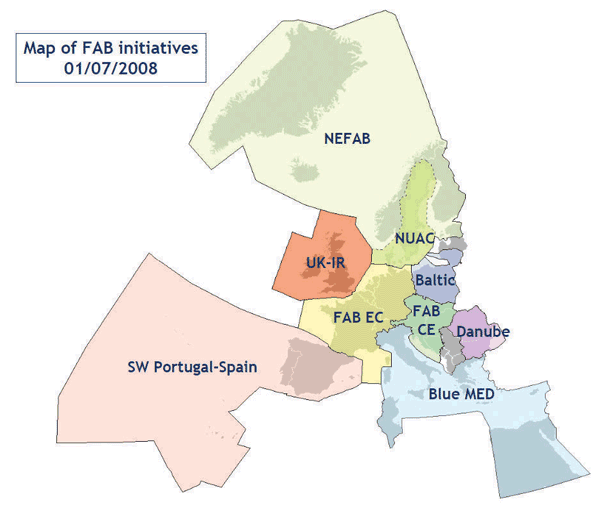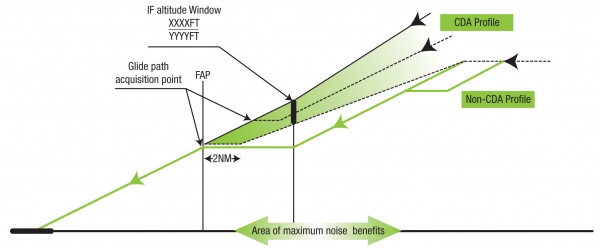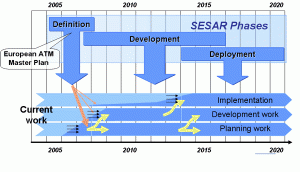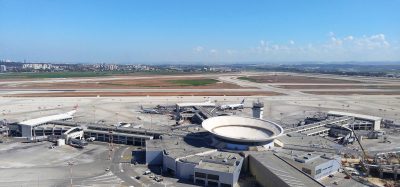Integrating Airports into the future Air Traffic Management System
- Like
- Digg
- Del
- Tumblr
- VKontakte
- Buffer
- Love This
- Odnoklassniki
- Meneame
- Blogger
- Amazon
- Yahoo Mail
- Gmail
- AOL
- Newsvine
- HackerNews
- Evernote
- MySpace
- Mail.ru
- Viadeo
- Line
- Comments
- Yummly
- SMS
- Viber
- Telegram
- Subscribe
- Skype
- Facebook Messenger
- Kakao
- LiveJournal
- Yammer
- Edgar
- Fintel
- Mix
- Instapaper
- Copy Link
Posted: 5 April 2010 | David McMillan, Director General, EUROCONTROL | No comments yet
Aviation has been especially badly hit by the economic crisis. Airlines worldwide lost €7.9 billion in 2009 and a further €4 billion loss is forecast for 2010. Traffic in Europe declined by 6.6% in 2009 – the biggest fall on record and one which has had a severe impact on all in air transport. Although key hubs such as Frankfurt and London Heathrow fared slightly better than average, traffic at many European airports declined by double digit figures.
Aviation has been especially badly hit by the economic crisis. Airlines worldwide lost €7.9 billion in 2009 and a further €4 billion loss is forecast for 2010. Traffic in Europe declined by 6.6% in 2009 – the biggest fall on record and one which has had a severe impact on all in air transport. Although key hubs such as Frankfurt and London Heathrow fared slightly better than average, traffic at many European airports declined by double digit figures.
Before the current debate about aviation and climate change, which has seen the aviation sector rise to the top of the global environmental agenda, questions about the sector’s impact focused on the environmental impact on regions surrounding airports. As entry and exit points to the aviation system, airports have long had to deal with questions about noise and air quality in their vicinity.
This issue is still a pressing one and recent Air Traffic Management (ATM) programmes are making strides in not only lessening aviation’s overall environmental impact, but also in reducing the impact airports have on their localities. While the short-term economic outlook may force airports to tighten their belts and cut costs, there are strong arguments as to why they need to keep investing now for the future.
Observing capacity and growth
The importance of airports has been recognised by the establishment of the European Union Observatory on Airport Capacity and the second Single Sky Package.
The Observatory was launched in November 2008, following the publication in the previous year of the European Commission Action Plan for airport capacity, efficiency and safety. Consisting of representatives from a variety of stakeholders, including airports, airlines, national and local authorities and resident associations, it will advise the European Commission on airport capacity and growth issues. The Airport Observatory will clearly have plenty of work to do during the five years of its planned existence.


Map of FAB initiatives 01/07/2008
Challenges of Growth
EUROCONTROL publishes reports which give decision-makers up-to-date assessments of the challenges faced by the aviation system. The “Challenges of Growth 2008” report was the third in this series of studies and was based on a survey of the capacity plans at 138 airports.
The report concluded that, under the most likely scenario, and even if current expansion plans are delivered, airport capacity will lag behind demand by some 2.3 million flights per annum by 2030. This is the equivalent of adding another 30 London Heathrow’s to the system! Although the recent crisis has probably delayed this scenario by some years, the prospect of serious capacity shortfall should be borne in mind by all policy-makers.
This potential capacity gap is made more worrying by the fact that demand concentrates geographically and over time on large airports and airport systems. Although secondary airports provide some relief, they may not be located where passengers want to go and demand may return to the main hubs in spite of congestion there. 2009 traffic statistics confirm this trend, with secondary airports generally seeing greater declines in traffic than key hubs.
This compounds the environmental issue: the greater the capacity shortfall, the greater the rise of environmental impact at the overall systems level, but also at the local level – flights queuing to take-off, using sub-optimal flight profiles when climbing and descending, circling before landing and waiting for arrival gates to become available.


Continuous Descent Approach
Organising Capacity and Flow Management
Well-organised air traffic flow and capacity management in which airports are properly integrated is essential. EUROCONTROL has a long track-record of activities and services geared towards the airport industry, based upon maximising any latent capacity which may be available.
The Central Flow Management Unit (CFMU), for instance, organises the Air Traffic Flow Management (ATFM) processes across Europe, working closely with national authorities, airport operators and air navigation service providers to smooth the flow of traffic across our skies.
Airport Collaborative Decision Making
Airports are increasingly being brought into this process through the sharing of real-time operational data through Airport Collaborative Decision Making (A-CDM). EUROCONTROL is strongly encouraging airport operational stakeholders to implement this process. It allows accurate operational data to be made available to all those who need it, providing the same operational picture to all stakeholders, and therefore improving the quality of decisions made
In its most advanced version, A-CDM is set to link airport operations with the European network flow manager, the CFMU, thereby realising the long-awaited integration of airports into the ATM Network.
This, for example, will make it possible to hold an aircraft at the gate with its engines switched off, rather than have it hold either on the taxiway system (generating noise and emissions) or holding in the air before approach, burning fuel and also releasing emissions.
With A-CDM, the network is served with more accurate take-off information to update flight profiles and derive ATFM slots. When more airports implement A-CDM, the network will be able to utilise available slots more efficiently and lost capacity will be reduced. Significant benefits have already been achieved at airports – including London Heathrow and Munich – where collaborative decision-making has been implemented, including a reduction in delays through improved predictability and better planning.
The air traffic flow and capacity management process, co-ordinated through EUROCONTROL, adds real value by identifying what is best for the efficient functioning of the entire network. However, recent ATM initiatives are going far beyond collaborative decision-making and are aiming at the next generation ATM system.
Towards 2020: the SESAR Joint Undertaking
The key initiative is the €2.1 billion Single European Sky Air Traffic Management Research Programme (SESAR). The SESAR Joint Undertaking between EUROCONTROL, the European Union, and industry entered its development phase in 2008 and provides a framework in which all stakeholders can work together to consolidate ATM-related development activities in Europe on performance improvement.
By 2020, SESAR aims to improve safety performance by a factor of 10, enable a three-fold increase in capacity which will reduce delays both on the ground and in the air, reduce the cost of air navigation service provision by more than 50% and provide 10% reduction of the environmental impact per flight.
The Single European Sky
SESAR feeds directly into the Single European Sky initiative. This performance-orientated approach to ATM was strengthened by the second package of Single European Sky legislation, which came into force in December 2009: it made provision for the enforcement of regional performance targets through Functional Airspace Blocks (FABs).
Targets in key areas such as flight delays, cost reductions, flight efficiency and safety will be set throughout the European aviation area. They will be binding and, together with FABs, will lead to a radical change in airspace architecture, creating a de-fragmented European sky in which airway routes are designed around demand and traffic flows, rather than national boundaries.
Airports fit directly into this 21st Century ATM system and will take A-CDM a level further through a programme called System Wide Information Management (SWIM). By covering all phases of flight, from an aircraft’s push-back from its departure gate to the engine shut down at its arrival gate, SESAR technologies and techniques will manage all stages of a flight as a single continuous event. Indeed, SESAR will finally allow airports to become full participants in the ATM system.

Collaborative Environmental Management
SESAR also integrates the need for improved spatial planning and operational performance at and around airports. The latter can be achieved through a process pioneered by EUROCONTROL called Collaborative Environmental Management (CEM), under which airport operators can manage environmental impact in the airport vicinity in cooperation with their operational partners – air traffic control, providers of ground services at airports, airlines and other airport operators.
SESAR targets CEM for widespread implementation. Its validation will be completed this year by EUROCONTROL through the development of case studies at airports which have volunteered to implement it.
Improving flight efficiency today
Indeed, even before SESAR’s deployment in 2013, EUROCONTROL and its partners are working hard on a number of research programmes to deliver results in the short-term.
We are, for example, working in partnership with Airports Council International (ACI) Europe, the International Air Transport Association (IATA) and the Civil Air Navigation Services Organisation (CANSO) on a Flight Efficiency Plan which, if fully implemented, will save 470,000 tonnes of fuel or 1,555,000 tonnes of CO2 annually. An important element of this programme is helping airports implement Continuous Descent Approaches (CDAs).
The implementation of CDAs allows for minimum engine power to be used from cruising altitude to the arrival runway. Aircraft pilots flying CDAs into their destination airports can save up to 100kg of fuel per flight over conventional approaches, substantially reducing emissions and noise levels for communities around airports.
Over 20 airports now employ CDA and the figure is expected to grow to over 100 by 2013. We are seeing much enthusiasm for the significant expansion of CDA, both operationally and in geographic scope. If these descent procedures were to be implemented at 20% of European airports, annual savings to airlines would be approximately 120,000 tonnes of fuel or 400,000 tonnes of CO2.
In the short term, EUROCONTROL plans to launch an online interactive map where it will be possible to access a range of CDA-related information, and to show CDA implementation status throughout Europe for stakeholders and other interested parties.
Ready for tomorrow’s challenges
At airports, more than almost any point in the aviation system, it is crucial to find a good balance between societal, environmental and economic imperatives. ATM is providing a solution to this: in the short-term through programmes such as the A-CDM and in the medium-term with SESAR, which will fully integrate airports in the ATM system. It stands as an important example of a programme built on a solid partnership with airport operators, air navigation service providers and airspace users, all collaborating closely at every stage of planning and testing of processes and technologies.
However, risks remain and in the deployment of SESAR and the implementation of the second package of Single European Sky legislation, the right balance must be struck between local flexibility for individual airports and the need for harmonisation on a network level.
Operational constraints driven by understandable local environmental concerns can, in some instances, be counter-productive at the overall system or network level – something that must be avoided. There is little efficiency, for example, in imposing a rule to reduce one environmental impact such as noise on a local level, if it would result in an overall increase in fuel burn and emissions.
Airport stakeholders, therefore, have to continue building links with SESAR and the International Civil Aviation Organisation (ICAO), especially regarding airport planning guidance. Since many local regulators approve airport master plans for several decades ahead, it is essential they are aware of what might be implemented by SESAR and ICAO in these timeframes.
Our ATM system has to deal with persistently high loads of traffic, coping with delays, strikes, cancellations, bad weather and major events such as the World Cup or the Olympic Games. Despite facing critical operational challenges, it also has to keep a clear focus on creating long-term benefits and create the regulatory and technical basis to secure a decrease in aviation’s environmental impact.
By working in partnership and through connecting all nodes of the air transport system closely with each other, we can do our best to accommodate the air traffic of the 21st century safely and sustainably.
About the author
David McMillan has been Director General of EUROCONTROL since 1 January 2008. He previously held the post of Director General of UK Civil Aviation at the Department for Transport from April 2004. Prior to that he was Director of Strategy and Delivery, responsible for the Department’s delivery agenda, business planning and relations with the EU.
David has had a long career in the department and its predecessors, having worked in aviation, integrated transport and personnel. Key posts have involved a stint as Transport Secretary in the British Embassy in Washington DC; acting as the Secretary of State’s Press Spokesman; setting up the NATS public private partnership; and securing the replacement of Railtrack by Network Rail as the UK’s rail infrastructure provider.
David started his career in the Diplomatic Service, serving in Morocco and Zimbabwe.
He has a degree in French and Spanish from Edinburgh University.


















